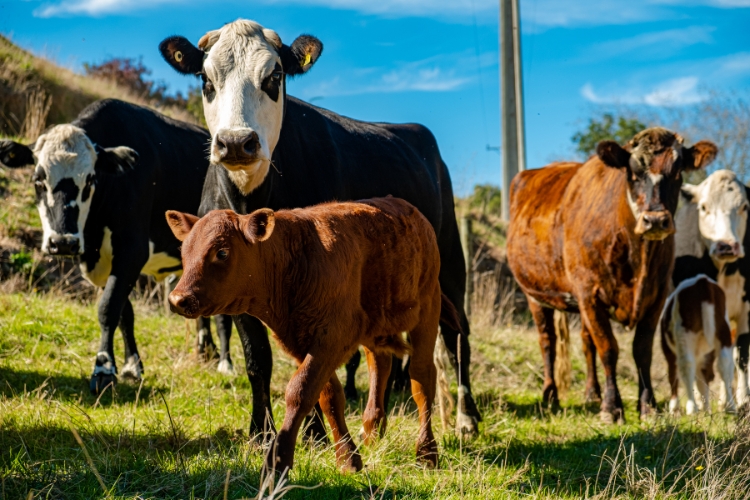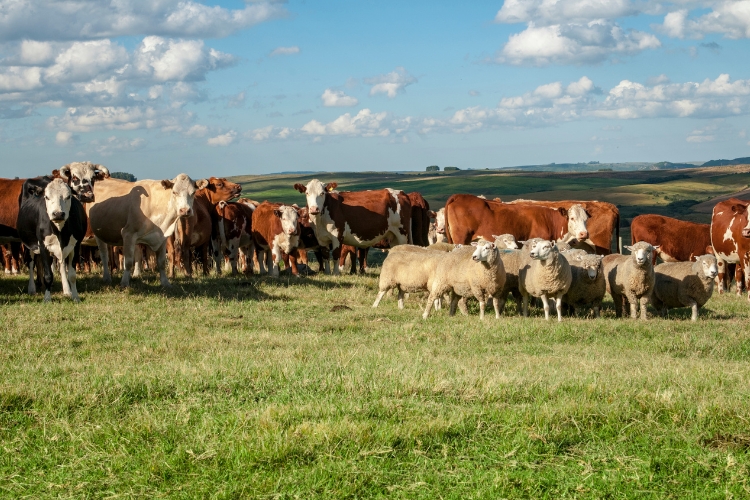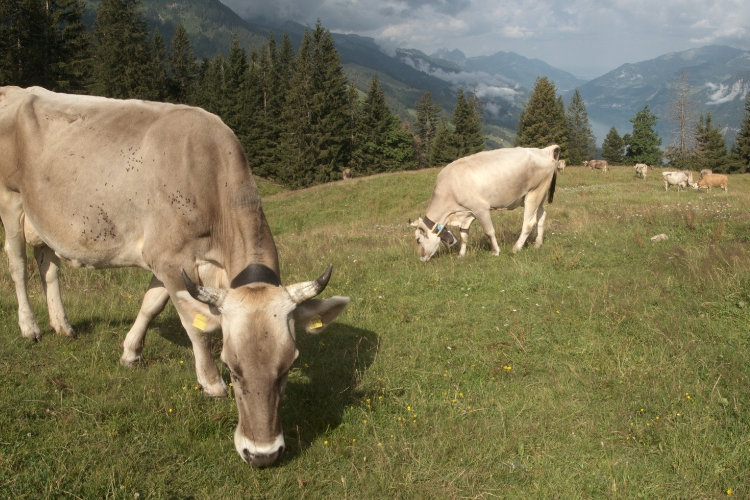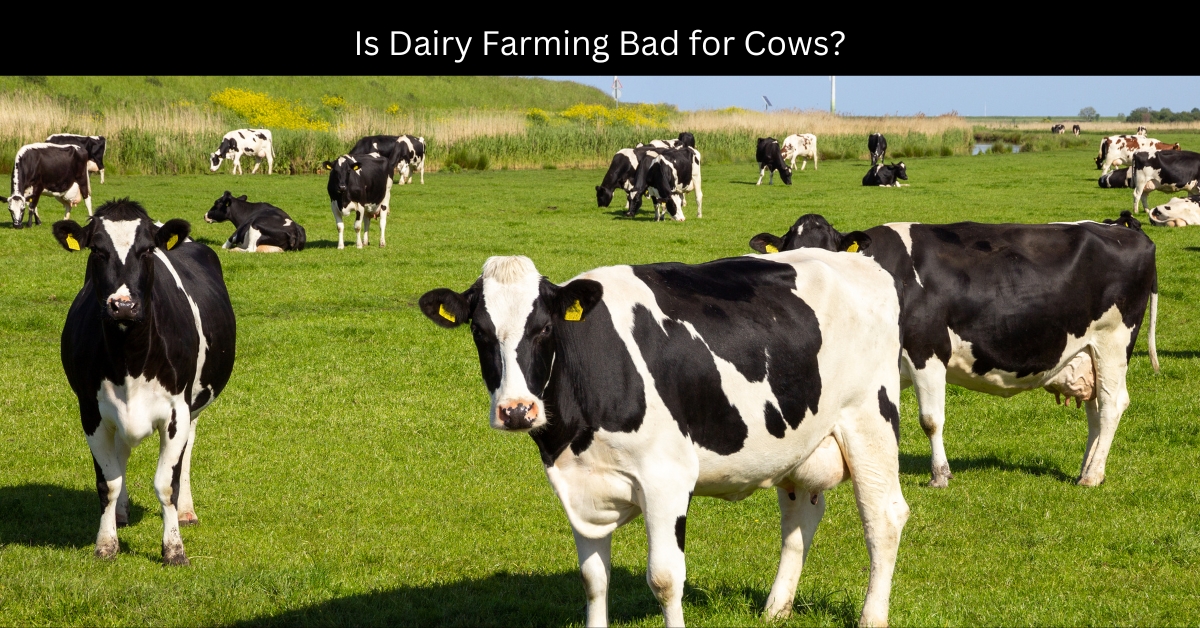Dairy farming has long been a cornerstone of agricultural production, providing a reliable source of milk, cheese, and other dairy products to consumers around the world.
However, in recent years, the ethical and environmental implications of dairy farming have come under increasing scrutiny. As consumers become more aware of animal welfare and sustainability issues, the question of whether dairy farming is truly “bad” for cows has taken on greater significance.
In this blog article, we will explore the complex and multifaceted topic of dairy farming and its impact on the animals at the heart of the industry.
By examining the history and practices of modern dairy farming, the animal welfare concerns that have been raised, the environmental impact of the industry, and the emerging alternatives, we will strive to provide a balanced and well-informed perspective on this important issue.
Key Takeaways:
- Dairy farming has evolved from small-scale operations to large-scale, industrialized systems focused on maximizing milk production.
- Animal welfare concerns in dairy farming include physical health issues, behavioral deprivation, and emotional distress due to intensive management practices.
- Ethical considerations, such as the dairy cow’s shortened lifespan, separation of cows and calves, and slaughter of male calves, raise questions about the morality of dairy consumption.
- Dairy farming has a significant environmental impact, contributing to greenhouse gas emissions, water consumption and pollution, and deforestation.
- Alternatives like organic, pasture-based farming, and plant-based milk options offer more sustainable and ethical choices for consumers.

The Dairy Farming Industry
1. History of Dairy Farming
Dairy farming has a long and storied history, dating back thousands of years to the domestication of cattle. For centuries, small-scale dairy operations provided milk and dairy products to local communities, often integrating with mixed crop and livestock farming systems.
However, the 20th century saw a dramatic shift in the industry, as technological advancements and the pursuit of greater efficiency led to the rise of large-scale, industrialized dairy farms.
2. Modern Dairy Farming Practices
Today’s dairy industry is characterized by a focus on maximizing milk production through intensive management practices. Cows are often confined to indoor housing, such as free-stall barns or tie-stall systems, where they are fed a specialized diet designed to optimize milk yield.
Selective breeding and the use of growth hormones have also played a significant role in increasing milk production, with some high-yielding cows capable of producing over 25 liters of milk per day.

Animal Welfare Concerns in Dairy Farming
While the dairy industry has undoubtedly become more efficient, the welfare of the cows at the heart of the system has become a major point of concern for animal advocates and ethical consumers.
1. Physical Health Issues
The relentless drive to increase milk production has taken a toll on the physical health of dairy cows. Conditions such as mastitis (an udder infection), lameness, and metabolic disorders are common in many dairy herds, often due to the stress placed on the animals’ bodies. Additionally, the frequent cycles of pregnancy and lactation can lead to premature aging and a shorter lifespan for dairy cows.
2. Behavioral Deprivation
Dairy cows are highly intelligent and social animals, with complex behavioral needs. However, the confined and restrictive environments of modern dairy farms often prevent cows from engaging in their natural behaviors, such as grazing, roaming, and forming social bonds. This behavioral deprivation can lead to increased stress, frustration, and abnormal behaviors.
3. Emotional Distress
Emerging research in animal cognition and emotion suggests that dairy cows are capable of experiencing a range of complex emotions, including fear, anxiety, and grief. The separation of cows and their calves, a common practice in the dairy industry, is particularly distressing and can have long-lasting emotional consequences for the animals.

Ethical Considerations
Beyond the animal welfare concerns, the dairy industry also faces significant ethical challenges that have led many consumers to question the morality of dairy consumption.
1. The Dairy Cow’s Natural Lifespan
Dairy cows are typically slaughtered at a fraction of their natural lifespan, which can be up to 20 years, due to the physical toll of the industry. The average lifespan of a dairy cow is just 4-6 years, highlighting the stark contrast between the animals’ natural potential and their reality.
2. Separation of Cows and Calves
In dairy farming, it is common practice to separate newborn calves from their mothers shortly after birth. This separation is highly distressing for both the cow and the calf, as it disrupts the natural bonding process and deprives the animals of their basic maternal and filial needs.
3. Male Calf Slaughter
The dairy industry’s reliance on female cows for milk production means that male calves are often viewed as byproducts. These male calves are frequently sent to be slaughtered at a young age, either for veal production or simply because they have no economic value to the dairy farmer.

Environmental Impact of Dairy Farming
In addition to animal welfare concerns, the dairy industry has also come under scrutiny for its significant environmental impact.
1. Greenhouse Gas Emissions
Dairy farming is a significant contributor to global greenhouse gas emissions, primarily due to the methane produced by the animal’s digestive processes and the carbon dioxide released through the production and transportation of feed and other inputs.
2. Water Consumption and Pollution
Dairy farming is a highly water-intensive industry, requiring large amounts of water for drinking, feed production, and cleaning. The waste produced by dairy cows can also lead to water pollution, contaminating nearby waterways with excess nutrients, pathogens, and chemicals.
3. Land Use and Deforestation
The need for grazing land and feed production has led to significant deforestation in many parts of the world, as natural habitats are cleared to make way for dairy farms and associated agricultural activities.

Alternatives to Traditional Dairy Farming
As concerns about the dairy industry’s impact on animal welfare and the environment have grown, a range of alternative approaches and products have emerged.
1. Organic and Pasture-Based Farming
Some dairy farmers have embraced more sustainable and animal-friendly practices, such as organic and pasture-based farming. These systems typically provide cows with greater access to outdoor space, more natural diets, and reduced reliance on synthetic inputs, potentially improving the animals’ overall well-being.
2. Plant-Based Milk Alternatives
The rise of plant-based milk alternatives, such as almond, soy, oat, and cashew milk, has offered consumers a growing number of dairy-free options. These alternatives often have a lower environmental impact and do not involve the exploitation of animals.
Conclusion
The question of whether dairy farming is “bad” for cows is a complex and multifaceted issue, with no easy answer. While the dairy industry has undoubtedly provided a valuable source of nutrition for humans, the animal welfare concerns, ethical dilemmas, and environmental impact of modern dairy farming practices have led many to question the sustainability and morality of the industry.
As consumers become more aware of these issues, the demand for alternative dairy products and more ethical farming practices is likely to continue growing. By encouraging transparency, promoting animal welfare, and supporting sustainable solutions, we can work towards a future where the interests of both cows and consumers are better aligned.
FAQs:
- Are Dairy Cows Mistreated?
Many dairy cows face significant animal welfare issues, such as physical health problems, restricted natural behaviors, and emotional distress from practices like early calf separation. While some farms prioritize animal welfare, the industrialized dairy industry has been criticized for prioritizing milk production over the wellbeing of the animals. - How Long Do Dairy Cows Live?
Dairy cows typically have a much shorter lifespan than their natural potential of up to 20 years. The average lifespan of a dairy cow is just 4-6 years, largely due to the physical toll of intensive milk production and early slaughter. - Is Dairy Farming Bad for the Environment?
Dairy farming has a significant environmental impact, contributing to greenhouse gas emissions, water consumption and pollution, and deforestation. The industry’s reliance on feed production, manure management, and other resource-intensive practices make it a major contributor to climate change and environmental degradation. - What are Alternatives to Dairy Farming?
Consumers concerned about the ethics and sustainability of dairy farming have several alternatives to choose from, including organic and pasture-based dairy farms, as well as a growing selection of plant-based milk products made from sources like almonds, soy, oats, and cashews. These alternatives can offer more animal-friendly and environmentally-conscious options.

